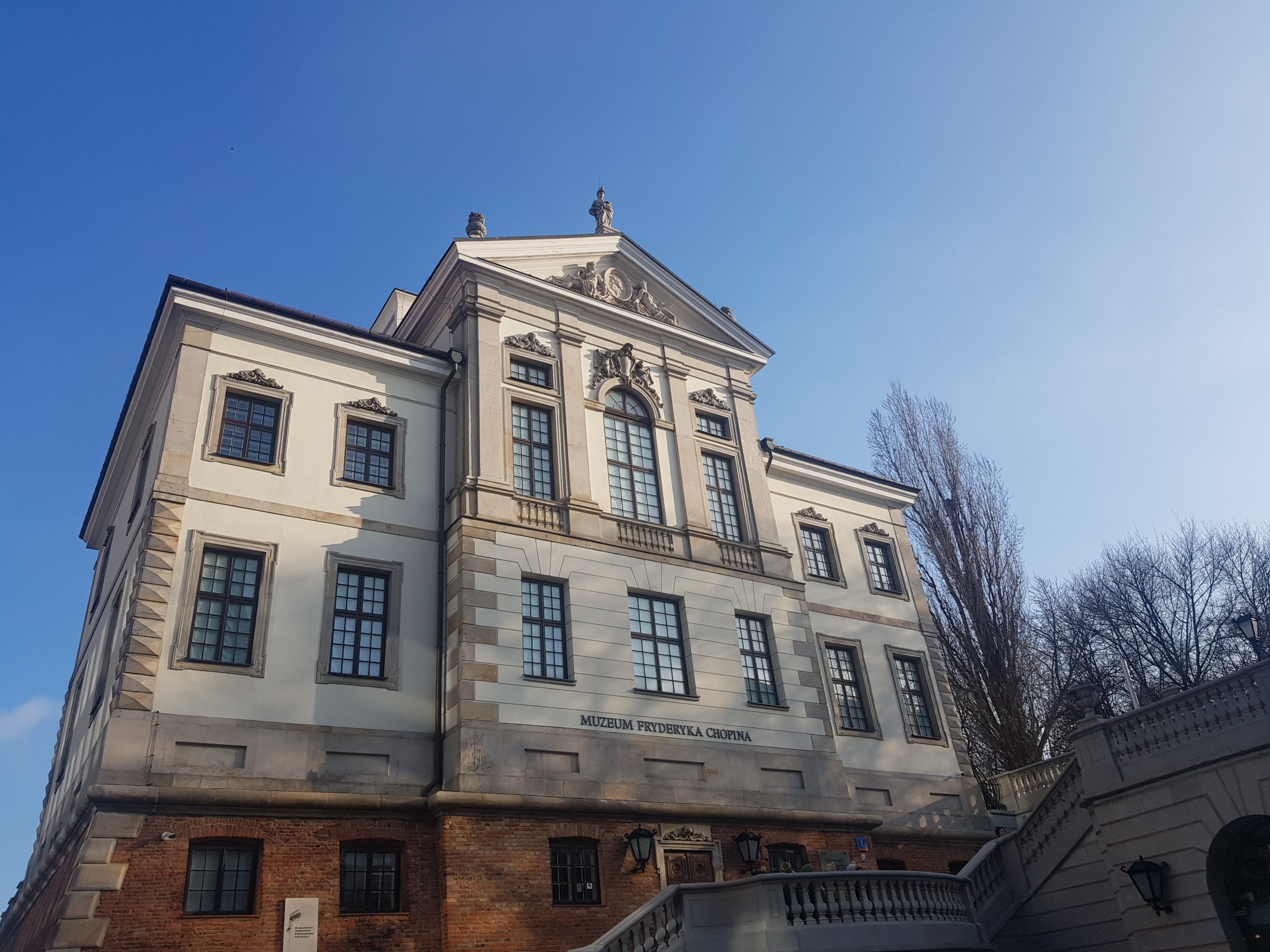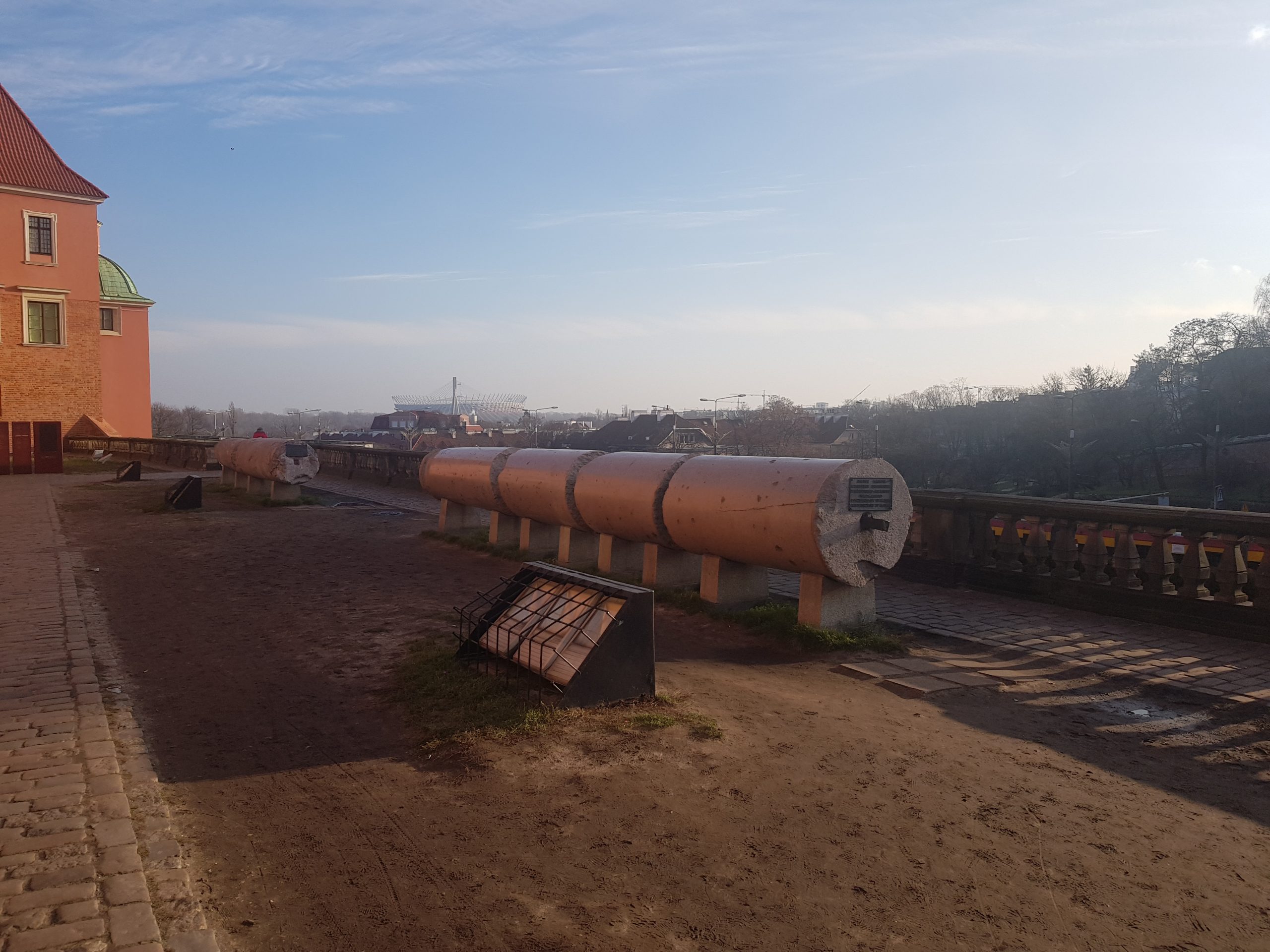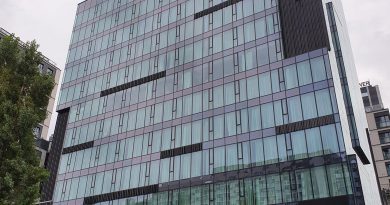Warsaw – Fryderyk Chopin Museum
I’ve never managed to visit this museum during my previous visits to Warsaw, but it’s a popular tourist destination and it opened in the grand Ostrogski Palace in 1953.
My first impressions weren’t particularly positive as I went to the ticket desk and waited for just over five minutes with some others in a queue. Neither of the two staff acknowledged anyone waiting, and they then just casually threw over some cards. The problem with doing this in a careless manner was that the staff member didn’t give me one and then seemed most put out when I asked for a card, asking what I had done with it. It was an unusually sloppy welcome from a Polish museum.
A staff member at the entrance to the main part of the museum gave a quick introduction, explaining that the card provided operated the multi-media displays throughout the museum. I chose to visit on a Wednesday as there’s free admission for all, so I arrived early before the crowds.
Many of the displays were like this, so they needed the card to operate them. I have no idea why they’re using cards and not just getting visitors to press a button on the display, it seems like technology for the sake of it. I had thought that they were encoded with the preferred language of the visitor, but since the man at the ticket desk just handed them out without checking, that didn’t seem quite as likely.
One of the large rooms full of displays, although I was more interested in the room itself which is mostly obscured. And, unfortunately, I had to be interested in the room as I was struggling to find much else of interest to engage with. One exciting element of curating a museum should be to make it accessible to those with no knowledge of the subject that is being explained. I had little prior knowledge of Chopin and his life and I left the museum with the same lack of knowledge.
This museum to me was like giving a detailed biography in book form to someone who just wanted to find out more about an individual. It’s impractical for them to read something like 300 pages, so there needs to be some flow of information to get the basics out and then build on that for those who are interested. Books can use timelines, summaries or even just a list of contents, whereas I had no idea of what was going on in this museum.
“The exhibits follow no obvious timeline and are hard to follow. If you want to listen to an audio of Chopin telling you what colour he wants his wallpaper this is for you. You will leave the museum having no clue how he died, why he went to Paris, what kind of person he was or why his music is so special. But don’t worry you will have seen several letters and illustrations to his family members none of which readable.”
I do agree with this review, I had no idea what any of the letters were saying or what relevance they had. But there were sweeping amounts of information about trivialities of Chopin’s life and works.
“This museum is absolutely nothing but a collection of miscellaneous facts and pictures presented to visitors without any context whatsoever and unless you devoted a good part of your life to a detailed study of Chopin’s life and biography. none of those pictures, names and dates will mean anything to you and will not be able to piece them together to find any connection to either the museum itself or, indeed, Chopin as a person and as a composer.”
And I agree with another reviewer, the museum had letters by people who seemed to have no link to Chopin at all, or at least, that link wasn’t explained.
“There is absolutely no order to this museum. Usually a museum which showcases a person is ordered chronological from birth to death. In many museums, the direction in which visitors should proceed are clearly marked. In this museum, we first observe an exhibit which explains something about Chopin’s birth, and after that it is like a maze with mass confusion and no sense of direction. Lots of musical scores, old photographs, letters, etc. but little information provided. For example, I am aware that Chopin was born in Poland, but spent most of his life in France. But I have no idea where or if this information was explained. Does the museum assume that we already know that?”
There are hundreds of reviews like this, but I agree again, the museum is assuming that the visitor has a significant prior knowledge of Chopin. But, those with a deep knowledge of Chopin, or a wider understanding of classical museum, will no doubt find the museum a treasure trove of information.
The museum building, the Ostrogski Palace, was the highlight of my visit, although the museum displays did obscure some of it. Work started on the building in the late seventeenth century, although sadly it was destroyed by the Germans during the Second World War. The building was reconstructed between 1949 and 1954, although some of the original cellars appear to have survived. I was mildly disappointed that the museum didn’t make more of the building and its heritage, although it might well have done on some random screen that I didn’t see.
A room full of screens with headphones attached for those who wanted to listen to Chopin’s museum.
Dried flowers from Chopin’s death bed.
Chopin’s death mask.
Chopin’s hair.
I managed to lengthen this visit out to 45 minutes, although I’m sure anyone really engaged with Chopin’s music could make it last much longer. Personally, I thought that the technology in the museum was overdone and made it harder to access information, although the exhibits seemed to be all over the place in any event.
“Lacks coherent and clear narrative from any (musical/biographical/historical) perspective. Almost all information is buried under convoluted and slow interactive gadgety screens for which you have to put on different headphones each time. A lot of handwritten letters on display tell you nothing about Chopin because they are not transcribed into something legible. The music section lacks deep analysis and background of what makes Chopin’s music special. Half an hour on Wikipedia will teach you more about Chopin than this museum.”
Another review sums up what I thought of the museum, which is that Wikipedia is perhaps a better source of information for anyone interested in Chopin. So, in summary, I agree with yet another reviewer, who wrote:
“Only for the most fervent Chopin fans… not recommended for the casual tourist. The museum could definitely be much improved.”












